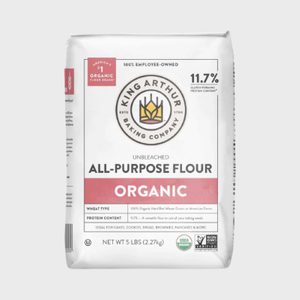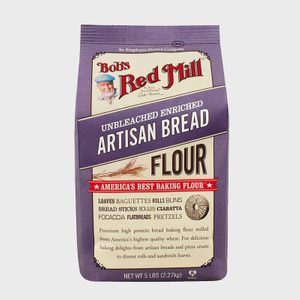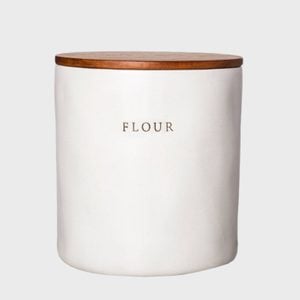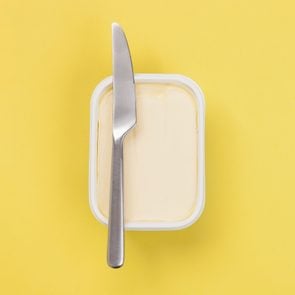This Is the Difference Between Bread Flour vs. All-Purpose Flour
Updated: Oct. 21, 2022
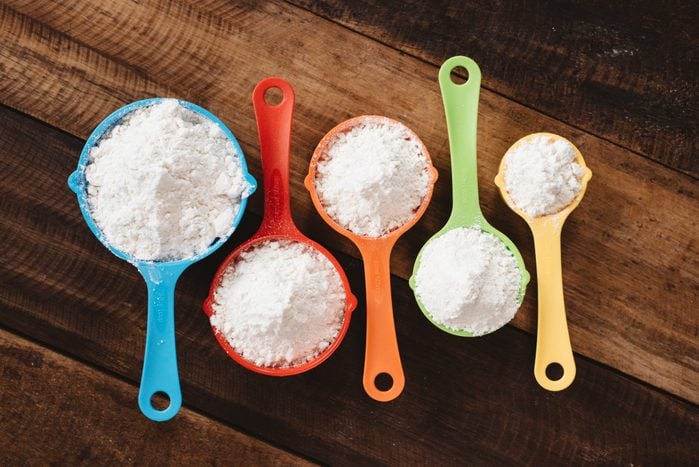
So long, baking confusion! We're breaking down exactly when and how to use bread flour vs. all-purpose flour.
When we’re little, we watch our parents work in the kitchen with awe. Flour, sugar, eggs, and a few other ingredients go into a bowl, and a little while later, a batch of cookies emerges from the oven as if by magic. Now that we’re older, we know it’s not quite as simple as we’d imagined, and each recipe poses its own challenges. But nothing puzzles us today quite like the question of when to use bread flour vs. all-purpose flour.
As with all good cooking questions—should we be using light brown sugar or dark brown sugar? White eggs or brown eggs? Baking soda or baking powder?—the answer comes from understanding the ingredients. We’re diving into some food facts to help you discover when and why you might use bread flour vs. all-purpose flour.
What is bread flour?
It’s clear from the name that bread flour is meant to be used for, well, bread. That’s because of its protein content and the effect it has on your finished product. According to the Wheat Foods Council, bread flour typically has a protein content of 12 to 14 percent.
Why is that important for baking bread as opposed to, say, cookies? Simply put, bread needs to rise—usually before and during baking. The protein in the flour, coupled with the gluten and the yeast, provides structure on the chemical level so the bread will develop its signature dense, thick, soft texture.
In short, using bread flour vs. all-purpose flour is essential for creating the perfect loaf of bread that’s just waiting to be sliced, toasted, and topped with jam or jelly.
What is all-purpose flour?
All-purpose flour is used in most standard baked goods recipes, including cookies, pastries, cakes, muffins, quick breads, and more. As you might’ve guessed, it’s used for all purposes—or at least most of them.
The Wheat Foods Council reports that all-purpose flour is about 8 to 11 percent protein, which is why it works best for treats that aren’t as dense and don’t have as much of a structure as bread does.
One thing to keep in mind when you’re considering all-purpose flour vs. bread flour: Since all-purpose flour is used in a larger variety of recipes and tends to be more broadly available than other types of flour, its quality can fluctuate widely, which may affect how it will perform in different recipes. So if you find that your tried-and-true blueberry muffins don’t taste quite right using the store brand all-purpose flour, it may be worth trying a different brand.
Can I substitute all-purpose flour for bread flour (and vice-versa)?
The short answer: Yes, you can. Substituting bread flour for all-purpose flour in cookies is not going to result in an inedible baked good. As for bread flour vs. all-purpose flour pizza dough, well, it’s what you’re used to. But create pizza using all-purpose flour instead, and your homemade pie will still be edible.
That said, whenever you are substituting one type of flour for another—say, when you’re looking at cake flour vs. all-purpose flour vs. bread flour—your finished product is going to look and feel slightly different. The defining characteristic of bread flour is its ability to contribute to a bread’s rise. So while you can use all-purpose flour instead of bread flour to bake bread, your resulting loaf likely won’t have the texture you were expecting. Instead, it will be a little lighter and a little smaller, but the flavor will be the same.
On the other hand, if you use bread flour in place of all-purpose flour in your favorite chocolate chip cookie recipe, your treats are going to be a little denser and a little bigger. They won’t be totally ruined, though.
So next time you’re looking to whip up some baked goods but are missing the right flour, don’t fret. And don’t let it dictate whether you take on a baking project. Because regardless of whether you use bread flour vs. all-purpose flour, the result will be delicious.
Source:
- Wheat Foods Council: “Flour 101”

